Friends of Modern Architecture/Lincoln
in association with
University Press New England
are pleased to present:
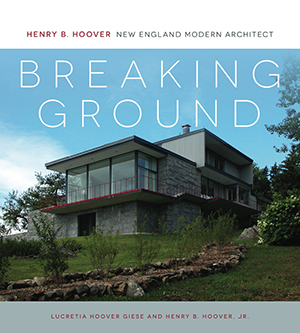
$45.00 Paperback, 978-0-692-29715-5
+$5.00 shipping & handling
$50.00 total
2015 • 176 pp. 83 illus.(46 color) 9”x10”
Breaking Ground can also be found at: Gropius House Visitor Center in Lincoln, Massachusetts
Retail sales outlets should contact University Press of New England for information on purchasing the book.
The life and work of an important regional modern architect.
“It is both rare and exhilarating to discover a modern architect of major talent and accomplishment who is yet little known today.”—Elizabeth Grossman, Rhode Island School of Design
“It is fitting that Hoover’s career receives careful attention now, when twentieth century modernism is being appreciated anew. Aside from valuably amending the history of that movement in New England, this recognition will, one hopes, contribute to the preservation of Hoover’s distinctive, often modestly sized, houses. For the first time, we can appreciate the significant contribution that Hoover made in company with such architects as Gropius, Marcel Breuer, Edwin Goodell, Eleanor Raymond, Walter Bogner, Carl Koch, and Hugh Stubbins.”—Gary Wolf, vice president, DOCOMOMO-US/New England
This beautifully illustrated book chronicles the life and work of New England-based modern architect Henry B. Hoover. Hoover’s practice demonstrates how he utilized, transformed, and individualized prevailing Beaux-Arts architectural training of the 1920s to achieve a modern residential architecture informed by—but different from—the normative (Bauhaus driven) idea of modern architecture. Hoover’s practice additionally provides a valuable example of the importance of the influence of landscape architecture on stylistic development. Because he worked with landscape architect Fletcher Steele for more than a decade, it is not surprising that in Hoover’s residential architecture siting is paramount. His clients sought a particular synthesis of the exceptional and the livable in houses that spoke to and of the New England landscape and were tailored to their site. The story of Hoover’s long career is therefore one of an American-trained architect who in the late 1930s initiated his “brand” of modern architecture in New England. His work, maturing in the 1950s and continuing well into the third quarter of the twentieth century, is a testament to an underappreciated genre of regional architecture.
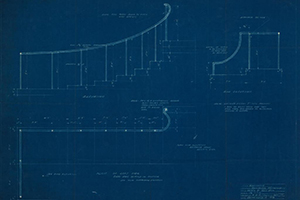
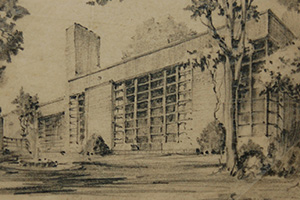
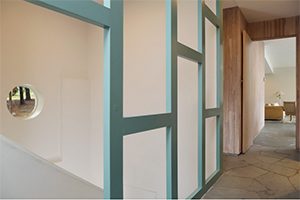
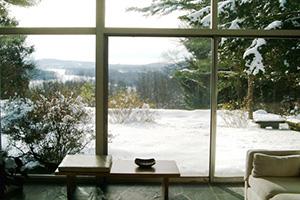
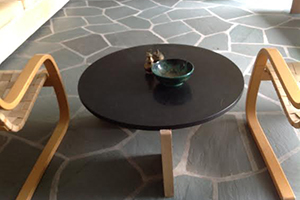

Photos clockwise from top left:
Drawing in Hoover’s remarkable hand of the Blue Steps at Naumkeag, a project Hoover participated in with noted landscape architect Fletcher Steele; Conceptual elevation (1935) for Hoover’s first house (1937) Lincoln’s first modern house pre-dating Gropius’s in the same town; Fretwork in a hallway in Hoover’s own house, in the bluish green he favored. Photo: Lara Kimmerer, courtesy of Janovitz-Tse/Modernmass.com Real Estate; View of the Cambridge Reservoir from Hoover’s house evidencing Hoover’s penchant for careful siting; Example of Hoover’s early interest in custom-designed furniture, here a circular table for his 1937 house, Photo courtesy: Sandy Grindlay; Another view of Hoover’s own house, demonstrating transparency and integration with the land, signature characteristics of Hoover’s residential design.
